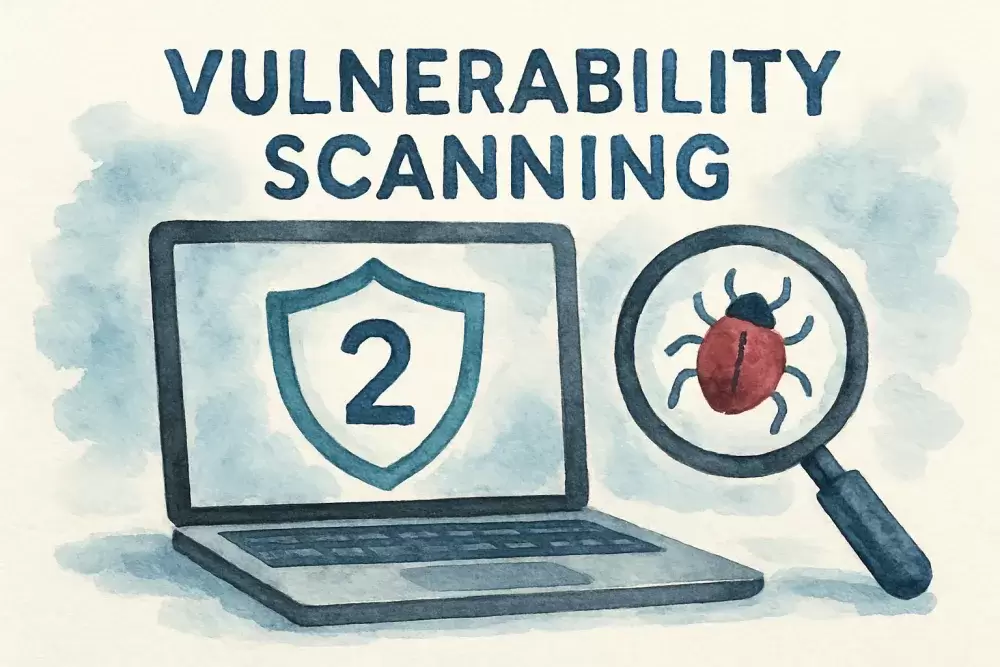SOC 2 Vulnerability Scanning Requirements: What Organizations Need to Know Written on . Posted in How-To.

SOC 2 Vulnerability Scanning Requirements: What Organizations Need to Know
Navigating the world of SOC 2 compliance can feel daunting, especially as organizations grow and prepare for audits that impact business viability. Whether you're a SaaS provider or steward sensitive client data, demonstrating robust security practices is essential for achieving and maintaining trust.
One topic that frequently comes up in SOC 2 conversations is vulnerability scanning. Is vulnerability scanning required for your SOC 2 audit, and how does it support your compliance efforts? Let's break down what matters most.
Understanding SOC 2 and Its Trust Services Criteria
SOC 2 (Service Organization Controls 2), established by the American Institute of Certified Public Accountants (AICPA), is a framework designed to ensure that companies properly manage data to protect the privacy and interests of their clients. To achieve SOC 2 compliance, organizations must demonstrate strong information security policies, submit to independent assessments, and provide evidence of effective controls.
The core of SOC 2 revolves around five Trust Services Criteria:
- Security: Safeguarding system resources against unauthorized access, system abuse, and outbreaks.
- Availability: Ensuring systems, products, and services are accessible as specified in agreements.
- Processing Integrity: Guaranteeing that data processing is complete, valid, accurate, timely, and authorized.
- Confidentiality: Protecting confidential information as agreed in contracts or SLAs.
- Privacy: Managing personal data in line with organizational policies and regulatory requirements.
What Is Vulnerability Scanning?
Vulnerability scanning is an automated process that continuously examines IT assets - such as networks, servers, web applications, and endpoints - to detect potential weaknesses that attackers could exploit. By identifying, ranking, and reporting on vulnerabilities, organizations can proactively fix gaps before they lead to incidents or breaches.
Routine vulnerability scans are essential for staying ahead of emerging threats and maintaining ongoing security hygiene. However, it's worth noting that vulnerability scanning is distinct from penetration testing: scanning is broad and automated, while penetration testing is targeted and typically involves human expertise.
Does SOC 2 Require Vulnerability Scanning?
SOC 2 does not specifically mandate vulnerability scanning as a requirement for compliance. However, the framework does require effective controls for safeguarding systems and data. This is especially evident in criteria like CC7.1 ("System operations"), which states organizations must use methods to identify changes and newly discovered vulnerabilities, typically through detection and monitoring procedures.
"To meet its objectives, the entity uses detection and monitoring procedures to identify (1) changes to configurations that result in the introduction of new vulnerabilities, and (2) susceptibilities to newly discovered vulnerabilities."
Regular vulnerability scanning is listed as a "point of focus" under CC7.1 and is considered a leading practice for demonstrating compliance - even if not named outright as a requirement. Scans should be conducted periodically and after major system changes, with timely remediation of any findings.
The Value of Vulnerability Scanning for SOC 2 Compliance
While not compulsory, incorporating vulnerability scanning into your security program can provide compelling evidence of due diligence, risk management, and continuous improvement for SOC 2 assessors and clients.
- Strengthens Security Posture: Identifies and mitigates weaknesses early, preventing incidents.
- Demonstrates Compliance: Shows auditors that your organization is proactive in threat detection and response.
- Enhances Trust Service Alignment: Supports all five trust service criteria, from security and availability to confidentiality and privacy.
- Improved Risk Prioritization: Enables teams to effectively direct resources toward the most critical vulnerabilities.
Potential Challenges of Vulnerability Scanning
- False Positives: Automated scans can misidentify risks, leading to unneeded investigation and resource consumption.
- Incomplete Coverage: Scanners may not detect the latest or most nuanced vulnerabilities, unlike a detailed pen test.
- Volume Management: Large scan results may overwhelm security teams, making prioritization and remediation planning a necessity.
How Vulnerability Scanning Supports SOC 2’s Trust Service Principles
| Principle | Vulnerability Scanning Impact |
|---|---|
| Security | Vital for detecting and addressing system vulnerabilities proactively. |
| Availability | Identifies threats that could lead to service outages, ensuring operational uptime. |
| Processing Integrity | Reduces risk of unauthorized or erroneous data modification. |
| Confidentiality | Helps block pathways to confidential data exposure and unauthorized access. |
| Privacy | Protects personal and sensitive data from vulnerabilities that could compromise privacy. |
Making Vulnerability Scanning Work for Your SOC 2 Journey
While neither vulnerability scans nor penetration testing are strictly mandatory under SOC 2, their adoption signals dedication to world-class security. A strong vulnerability management program not only helps meet audit expectations but also builds the trust of your customers and partners.
Evaluating how often to scan, what assets to prioritize, and how findings are remediated should be based on your organization's risk profile. For most, embracing automated scanning is a smart, scalable foundation for SOC 2-aligned operations.
Get Started with Panoptic Scans
Ready to elevate your security program and streamline SOC 2 compliance? Panoptic Scans automates vulnerability scanning across your network, infrastructure, and applications - enabling you to spot risks and demonstrate compliance faster.
Register today with Panoptic Scans to start running vulnerability scans and keep your organization on the path to SOC 2 success!
